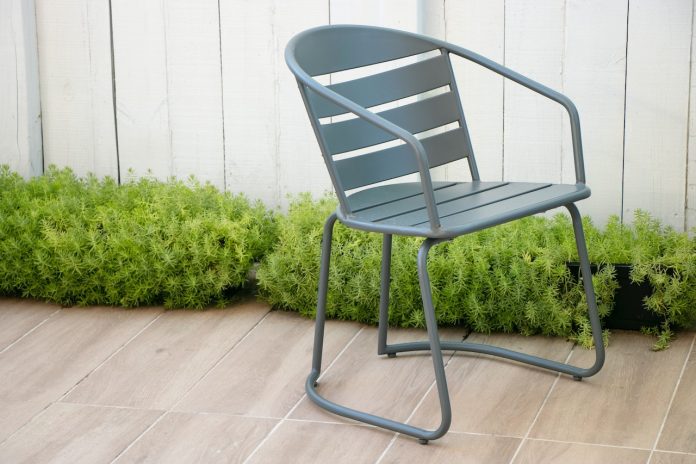When it comes to choosing a fencing material for your home, there are many options available. Two of the most popular options are composite fencing and wood fencing. Both have their advantages and disadvantages, and which one is right for you will depend on your individual needs and preferences. In this article, we’ll take a closer look at composite and wood fencing, and compare the two to help you make an informed decision.
What is Composite Fencing?
Composite fencing is made from a combination of wood fibers and plastic. It is a relatively new type of fencing material that has been growing in popularity in recent years. Composite fencing is designed to be low-maintenance, durable, and long-lasting. It is also eco-friendly, as it is made from recycled materials.
Pros of Composite Fencing:
Low-maintenance: Composite fencing is designed to be low-maintenance, which means you won’t have to spend a lot of time or money maintaining it. Unlike wood fencing, composite fencing doesn’t need to be painted or stained, and it won’t rot or warp over time.
Durable: Composite fencing is incredibly durable, and can last for many years without showing signs of wear and tear. It is resistant to insect damage, weathering, and fading.
Eco-friendly: Composite fencing is made from recycled materials, which makes it a great choice for environmentally-conscious homeowners.
Cons of Composite Fencing:
Cost: Composite fencing can be more expensive than wood fencing, especially if you opt for a high-end product.
Limited styles: While there are a variety of styles available, composite fencing doesn’t offer as much versatility as wood fencing. It can be difficult to find a style that perfectly matches your home’s aesthetic.
What is Wood Fencing?
Wood fencing is one of the oldest and most traditional fencing materials. It is made from a variety of woods, including cedar, redwood, and pine. Wood fencing is known for its natural beauty and versatility, and can be customized to match any home’s aesthetic.
Pros of Wood Fencing:
Natural beauty: Wood fencing is known for its natural beauty, and can add warmth and charm to any home. It is also highly customizable, and can be painted or stained to match your home’s aesthetic.
Variety of styles: Wood fencing comes in a variety of styles, from traditional picket fences to modern horizontal designs. This versatility makes it easy to find a style that perfectly matches your home’s aesthetic.
Affordability: Wood fencing is generally more affordable than composite fencing, especially if you opt for a more basic design.
Cons of Wood Fencing:
Maintenance: Wood fencing requires regular maintenance, including painting or staining every few years. It is also susceptible to rot, insect damage, and warping over time.
Durability: While some types of wood fencing are highly durable, others can be prone to damage from weathering and insect infestations.
Composite vs. Wood Fencing: Which is Right for You?
Now that we’ve looked at the pros and cons of composite and wood fencing, let’s compare the two to help you decide which is right for you.
Cost:
One of the biggest differences between composite and wood fencing is cost. While composite fencing can be more expensive upfront, it is generally more affordable in the long run due to its low maintenance requirements. Wood fencing, on the other hand, is more affordable upfront, but will require more maintenance over time.
Durability:
Composite fencing is generally more durable than wood fencing, as it is resistant to insect damage, weathering, and fading. While some types of wood fencing can be highly durable, others are more susceptible to damage.
Maintenance:
Composite fencing requires little to no maintenance, while wood fencing requires regular upkeep. Composite fencing doesn’t need to be painted or stained, and won’t rot or warp over time. On the other hand, wood fencing requires regular painting or staining to protect it from weathering and rot. Additionally, wood fencing is susceptible to insect damage and can warp over time if not properly maintained.
Style:
While both composite and wood fencing come in a variety of styles, wood fencing offers more versatility in terms of customization. Wood fencing can be painted or stained to match your home’s aesthetic, and there are a wide range of styles available, from traditional picket fences to modern horizontal designs. Composite fencing, while available in a range of styles, can be more limited in terms of customization options.
Eco-friendliness:
Composite fencing is made from recycled materials, making it a more eco-friendly option than wood fencing. Wood fencing, while a natural material, requires the cutting down of trees, which can have a negative impact on the environment.
Conclusion:
Choosing between composite and wood fencing ultimately comes down to your individual needs and preferences. If you’re looking for a low-maintenance, durable option that is eco-friendly, then composite fencing may be the right choice for you. However, if you prioritize customization options and natural beauty, then wood fencing may be the better choice. Additionally, cost and durability should also be considered when making your decision. Ultimately, it’s important to weigh the pros and cons of each material and choose the one that best suits your needs and budget.







